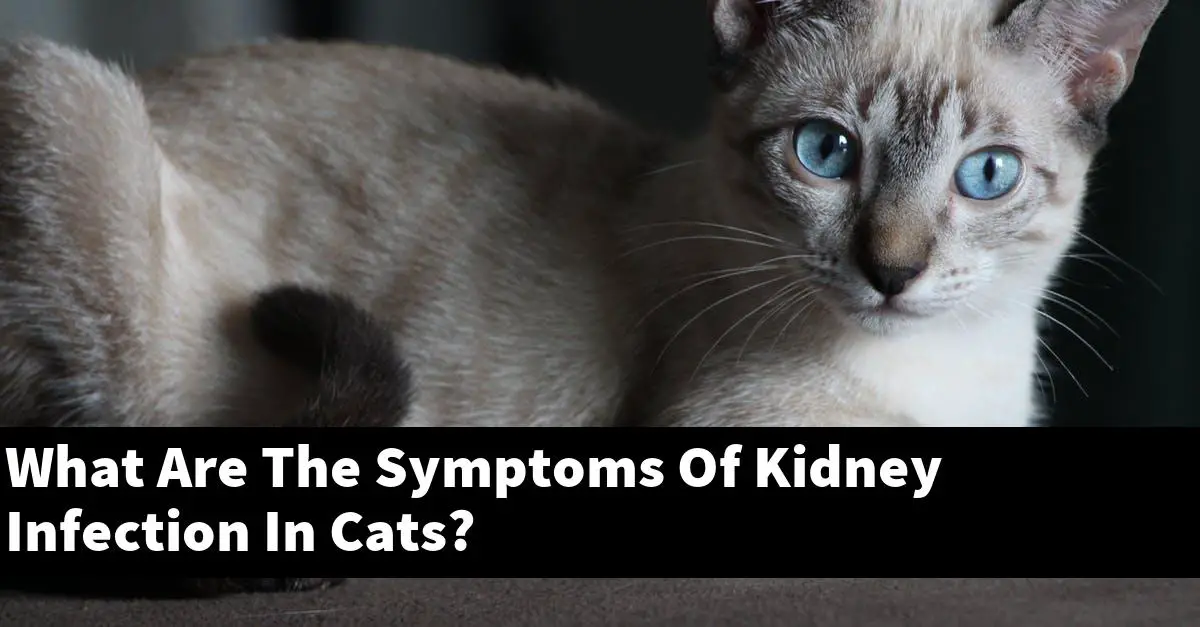Kidney infection in cats, also known as pyelonephritis, is a serious condition that can lead to death if left untreated. Symptoms include fever, lethargy, appetite loss, weight loss, vomiting, and diarrhea.
Treatment typically involves antibiotics and aggressive supportive care.
Can cats survive kidney infection?
Each cat is unique and will respond to different treatments. However, there are a few general points that can be made.
Generally, cats will experience more severe kidney infection symptoms if the infection is severe or if the cat has a pre-existing kidney condition. In these cases, the cat may require intensive treatment with antibiotics and may have to be hospitalized.
However, cats can generally survive mild to moderate kidney infections, provided the infection is treated promptly and the cat does not have a pre-existing kidney condition. Cats that survive kidney infections may experience some temporary side effects, such as decreased appetite and vomiting, but these usually subsides after the infection has been treated.
What causes a cat to get a kidney infection?
A cat may get a kidney infection if they are exposed to a bacteria, virus, or parasite that can cause the infection. Some common causes of kidney infection in cats are:
Bacteria: Bacteria can cause kidney infection by entering the body through the nose, mouth, or wounds.
Virus: Viruses can cause kidney infection by entering the body through the nose, mouth, or wounds.
Parasite: Parasites can cause kidney infection by entering the body through the nose, mouth, or wounds.
Does my cat have a UTI or kidney infection?
It depends on the individual cat’s specific medical history and symptoms. However, if your cat is displaying typical signs and symptoms of a UTI or kidney infection, such as increased frequency of urination, increased thirst, decreased appetite, fever, and general lethargy, it is likely that your cat has this condition.
In most cases, a UTI or kidney infection will clear up on its own with antibiotics prescribed by a veterinarian. If the condition is severe, however, your cat may require surgery to remove the infection and/or corrective surgery to improve their kidney function.
What are the first signs of kidney disease?
The first signs of kidney disease may include a change in the amount of urine produced, blood in the urine, or a feeling that the bladder is not empty after going to the bathroom. More serious signs may include swelling in the ankles or feet, confusion, and weight loss.
What does kidney failure look like in cats?
Kidney failure in cats can be classified into two types: end-stage renal failure (ESRF) and acute renal failure (ARF). ESRF occurs when the kidneys are no longer able to keep up with the body’s demands and ARF occurs when the kidneys are unable to filter blood properly. In both cases, the cats will start to experience signs such as vomiting, anorexia, and weight loss.
The cats will also start to experience problems with their blood pressure, heart rate, and breathing. If left untreated, ESRF and ARF can lead to death.
How do you treat kidney disease in cats?
There are a few ways to treat kidney disease in cats. The most common way is to give them medication to help protect their kidneys from damage.
Other ways to treat kidney disease in cats include dietary changes, fluids, and oxygen therapy.
How quickly does kidney disease progress in cats?
The speed at which kidney disease progresses in cats is largely dependent on a number of factors, such as the severity of the disease, the age of the cat, and the type of kidney disease. In general, however, kidney disease in cats typically progresses very slowly, with most cats taking anywhere from several months to several years to develop significant kidney damage.
Can a dirty litter box cause UTI?
A common misconception is that cats with UTIs are due to a dirty litter box. In fact, cats with UTIs are more likely to have a bacterial imbalance in their urinary tract, and a dirty litter box is just one of the factors that can contribute to this imbalance.
UTIs can also be caused by a number of other things, such as a foreign object (such as a hair) getting stuck in the cat’s urinary tract, a lack of normal bladder function, or a medical condition (such as diabetes) that affects the urinary tract.
How do I know if my cat has a bladder infection?
There are a few things you can do to help determine if your cat has a bladder infection. One way to check is to take a look at their urine.
If it is cloudy or has a yellowish color, this is a sign that your cat has a bladder infection. Another way to check is to take a look at their discharge.
If it is cloudy or has a greenish color, this is also a sign that your cat has a bladder infection.
What happens if a cat UTI goes untreated?
If a cat UTI goes untreated, the cat may develop a kidney infection, which can be life-threatening. In addition, the cat may develop a serious bladder infection, which can also be life-threatening.
If the cat has a kidney infection, the urine may be dark in color, and the cat may have a decreased appetite, fever, and lethargy. If the cat has a bladder infection, the urine may be cloudy, and the cat may have a decreased appetite, fever, and difficulty urinating.
If the cat has a kidney infection or bladder infection, the veterinarian may prescribe antibiotics to treat the condition.
Conclusion
Kidney infection in cats is a serious condition that can lead to death. Symptoms include weight loss, lethargy, vomiting, diarrhea, increased urination, and increased thirst.
If your cat is displaying any of these symptoms, it is important to take them to the vet immediately.

